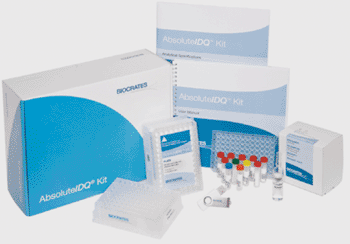Associations Identified Between Metabolic Markers and Diabetes
By LabMedica International staff writers
Posted on 14 Nov 2013
New associations have been discovered for two major type 2 diabetes risk genotypes and altered plasma concentrations of metabolic products.Posted on 14 Nov 2013
Polymorphisms in the transcription factor 7-like 2 (TCF7L2) gene have been shown to display a powerful association with type 2 diabetes (T2D) and there is a need to evaluate metabolic alterations in carriers of a common TCF7L2 risk variant.

Image: The AbsoluteIDQ metabolomics kit (Photo courtesy of Biocrates Life Sciences).
Scientists at the Helmholtz Zentrum München (Munich, Germany) and their colleagues enrolled 41 participants in a population-based cohort study carrying high-risk diabetes gene variants without having been diagnosed with diabetes, as well as participants without an increased diabetes risk. All study participants were subjected to a metabolic load. The nutrients, particularly sugars and fats, were administered either orally or intravenously. The scientists subsequently determined the concentrations of 163 metabolic products in blood samples from the participants.
Plasma samples from three different time points were subjected to metabolomics measurement. Metabolite concentrations were determined using the targeted metabolomics kit AbsoluteIDQ p150 (Biocrates Life Sciences AG; Innsbruck, Austria) applying mass spectrometric analysis. Plasma levels of other clinical chemistry markers, such as glucose and cholesterol, were also assessed.
The investigators observed that the concentrations of the recorded substances represent a particular metabolomic response pattern depending on the genotype. It was possible to verify specific metabolic effects, particularly for the TCF7L2 genotype, which is associated with an increased risk of type 2 diabetes. A targeted metabolomics platform was used to identify alterations in sphingolipid, phosphatidylcholine and lysophosphatidylcholine metabolism in subjects at potentially increased risk for T2D defined by the presence of the rs7903146 risk genotype.
The most important finding is that these differences were only observed after challenge tests and were present in a state when all conventional markers of glucose metabolism such as fasting and 2-hour glucose in oral glucose tolerance test, fasting insulin, proinsulin, and insulin sensitivity were still in the normal range.
Simone Wahl, the co-lead author said, “With our results, we are helping to close the gap between disease-associated genes on the one hand and the development of diabetes on the other. A typically changed metabolic performance can supply early indications of diabetes.” The study was published on October 24, 2013, in the journal Public Library of Science ONE.
Related Links:
Helmholtz Zentrum München
Biocrates Life Sciences AG








 (3) (1).png)




